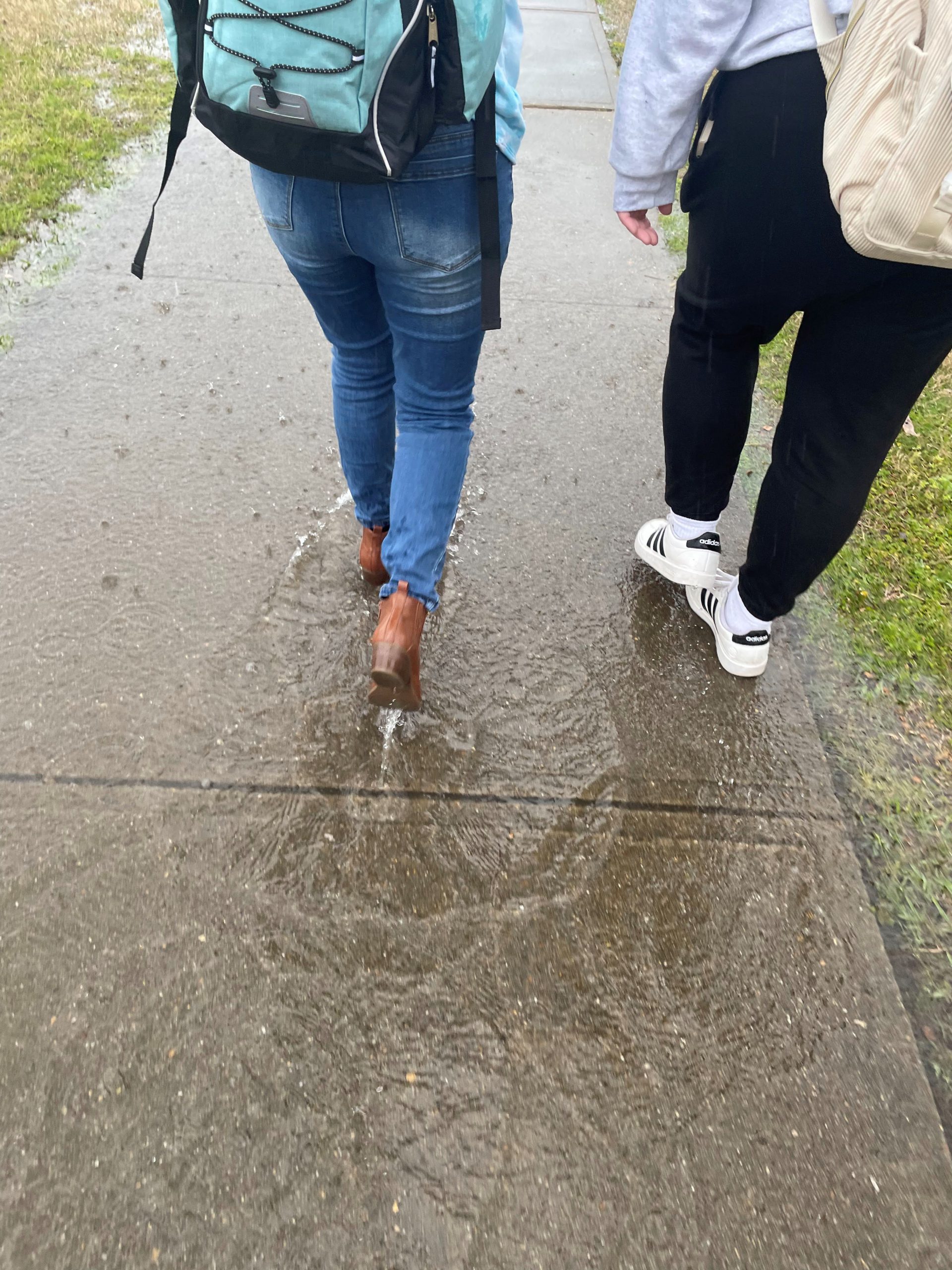Student traverse to class through flooded walkways.
Lily Reslink|Marlin Chronicle
Flooding is a high-priority issue on the agenda of local municipalities and environmental experts. The communities that Virginia Wesleyan resides in, Norfolk and Virginia Beach, heavily integrate this issue into their short-term and long-term planning.
The City of Virginia Beach website explains, “The Virginia Beach Flood Protection Program—The Ripple Effect—is a comprehensive 10-year plan to address recurrent flooding in Virginia Beach.”
As part of the Virginia Beach Flood Protection Program (FPP), Virginia Beach’s Public Works and Information Technology Department has launched the Flood Model Visualization and Exposure Tool. A City of Virginia Beach news release explained that this serves as “an easy-to-use platform designed to inform residents about flood exposure risks before and after the completion of [FPP] projects.”
The City of Virginia Beach Public Works website said data from this “reveals information about the buildings, infrastructure, and resources that could be impacted by such storm events.”
Virginia Beach received national recognition for this. Another City of Virginia Beach news release announced that the tool won a U.S. CIO 100 Award for the city on March 18, 2024. A CIO 100 Symposium & Awards website page explained that these awards go to “100 organizations and the teams within them that are using IT in innovative ways.”
Given the challenges that flooding poses, coastal communities are seeking out this higher level of innovation regarding flood mitigation. For example, WTKR reported on a Virginia Beach house that had been flooded 52 times, raising community concerns about how to address repeated incidents. These ongoing problems require ongoing attention and resources.
According to a City of Virginia Beach article, Leisha Pica, P.E., with Jacobs Engineering, shared the FPP’s current status in a City Council presentation on March 19. The article highlighted updates for 2024, “Since Hurricane Matthew there have been more than a dozen key programmatic accomplishments that demonstrate the City’s commitment to and investment in flood protection, including the addition of 49 full-time employees, and increasing the Stormwater and Flood Protection CIP budget from $264 million to $1.26 billion.”
Flooding also remains on the radar of Norfolk, which has held a series of open houses on the measures they are taking to address flooding. This is part of the larger work of Norfolk’s “Office of Resilience,” with Goal 1 of this office being “Design the Coastal Community of the Future.”
“Norfolk, Virginia is a dynamic, urban waterfront community. With more than 230,000 residents, our focus is to create and execute a comprehensive flooding plan that will ensure our city thrives for generations to come,” Kyle Spencer, City of Norfolk’s Chief Resilience Officer, said.
The City of Norfolk website also provides a virtual open house, available at resilientnorfolk.com, where the public can navigate virtual-reality rooms of informational displays from their devices. Through this, the city lays out its plan to address and mitigate flooding through 2032.
According to Spencer, informing the public is important. “It’s our mission to provide access to information for residents so they can be prepared for a storm event. Norfolk produces a variety of tools, programs and resources to ensure impacted areas are informed and adequately ready in advance of a storm event,” Spencer said.
The open house also emphasizes community involvement and feedback. “Feedback gathered from residents helps us plan for projects that will reduce flood damage to our city’s neighborhoods and vital services,” Spencer said.
Although flooding impacts VWU campus, students are largely unaware of any campuswide measures to address it.
Junior Bryn Lister said, “Just about every time it rains, a large pond forms in my suite.” These issues have been long-standing.
Alumna Brooke Morris ‘23 said that despite her recalling repeated problems with flood damage to resident halls, she observed minimal intervention on the issue in her time here.
Nonetheless, flooding initiatives for the University’s surrounding communities continue to progress.
By Lily Reslink
lbreslink@vwu.edu


